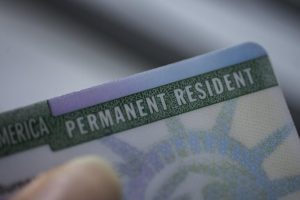Canada, with its stunning landscapes, vibrant cities, and welcoming culture, is a dream destination for many. But before you pack your bags and set off on your Canadian adventure, you’ll need to determine if you require a visa or an Electronic Travel Authorization (eTA).
1. Introduction: Visas and Electronic Travel Authorizations (eTAs)
There are two main options for entering Canada: a visa or an eTA.
-
Visa (Temporary Resident Visa – TRV): A visa is a formal document issued by a Canadian embassy or consulate that allows you to enter, stay in, and leave Canada for a specific period. It’s required for visitors who don’t qualify for an eTA or those planning to stay longer than six months.
-
Electronic Travel Authorization (eTA): An eTA is an electronic permission to travel to and transit through Canada. It’s a quicker and more straightforward option compared to a visa application.
2. How it Works:
-
Visa Application Process:
- Determine Your Eligibility: Check the official Canadian government website (https://ircc.canada.ca/english/visit/visas.asp) to see if you need a visa or an eTA.
- Gather Required Documents: This typically includes a valid passport, proof of travel funds, and a letter of invitation (if applicable).
- Submit Your Application: Applications can be submitted online or at a visa application center. Processing times vary depending on your location and application complexity.
- Biometrics: You may be required to provide fingerprints and a photograph.
-
eTA Application Process:
- Apply online at the Government of Canada website (https://ircc.canada.ca/english/visit/visas.asp).
- Pay the processing fee.
- Receive your eTA approval (usually within minutes).
3. Reviews: What People Say About Visas and eTAs
Reviews for both visas and eTAs tend to focus on the application process. While visas can take longer to obtain, they offer more flexibility for extended stays or multiple entries. eTAs are praised for their speed and convenience, making them ideal for shorter trips.
4. Safety Measures: Protecting Yourself During the Application Process
- Apply through official government channels to avoid scams.
- Be wary of unsolicited emails or calls claiming to be from Canadian immigration authorities.
- Do not share personal or financial information with anyone unauthorized to receive it.
5. Updates and How to Apply
For the latest information and application instructions, visit the official Canadian government website: https://ircc.canada.ca/english/visit/visas.asp
6. Application Criteria
Visa Application: https://www.canada.ca/en/immigration-refugees-citizenship/services/visit-canada/apply-visitor-visa.html
eTA Application: https://ircc.canada.ca/english/visit/visas.asp
Frequently Asked Questions (FAQs):
-
How long does a visa or eTA last?
- Visas typically last for a single entry or multiple entries with a validity period of up to 10 years. The authorized stay duration is determined by the border services officer upon arrival in Canada.
- eTAs are valid for five years or until your passport expires, whichever comes first. Each visit to Canada with an eTA cannot exceed six months.
-
What happens if my visa or eTA application is denied?
You will receive a notification outlining the reasons for the denial. You may be eligible to reapply by addressing the issues raised. Consider consulting with an immigration lawyer for guidance.
-
Can I extend my stay in Canada?
Under certain circumstances, you may be able to apply to extend your stay in Canada. It’s crucial to follow the instructions provided by the border services officer upon entry.
Planning your Canadian adventure? By understanding the differences between visas and eTAs, you can choose the most suitable option for your trip. Remember, thorough preparation and adherence to application procedures will ensure a smooth journey to the land of maple syrup and majestic scenery.



